Playing guitar in front thousands of fans, creasing your instruments as gently as a lover does simultaneously bashing the strings like a warrior’s swing. This is the dream moment for every little kid when they hold a guitar for the first time. Guitar has always been a headliner in the music industry. Especially if we talk about genres like Blues, Rock, Metal, Country or even classical music, guitar is always the most popular and enduring instrument in music history.
If we want to understand why the guitar was invented, we must trace down the history of the guitar along with its significance in shaping the culture across the globe.
First Traces of Guitar
Guitar was not always fancy looking with six strings to play. Tracing the guitar origins reveals the roots of modern-day guitars are clearly traced back thousands of years, when people from different beliefs and miles away from each other started using hollow wood bodies and strings (number of strings depend on the instrument).
One of the nearest ancestors of guitar was the “lute”, a commonly used instrument in the Middle Ages and renaissance period. Lutes were prominent in both Islamic and European regions. Before Lute, Instruments like Oud, Arab Instrument and tanbur in Mesopotamia and India around 2000 BC. These were the fundamentals to the evolution of guitar.
The guitar history timeline is not a process of a single day, it occurred in stages through various stages of history of guitar with creativity as a catalyst. Here is the the guitar history timeline as we see them today-
- 2000 BC- Various String instruments like, Oud, tanbur, sitar appear in Mesopotamia, Arab and India, marking significant points in the history of the guitar.
- 8th Century- Lute is gaining popularity in both Islamic and European Countries.
- 15th Century- Vihuela, a four double stringed plucked instrument started to make its way in Spain. It represents a key step in the evolution of the guitar, as it consists of the waist part and hollow body.
- 16th Century- The Baroque guitars, having 5 strings helped the guitar to attain its modern six string form.
- 18th Century- Six-string guitars started to become the standard form of guitars, Antonio De Torres, a Spanish luthier proposed the modern design of classical guitars in the mid-19th century, he also used nylon string to give a more warm and resonant sound.
- Late 19th Century- Christian Frederick Martin, A German immigrant to the United States is credited with the design of steel string acoustic guitars. These guitars quickly came into the mainstream due to their brighter and louder sound as compared to the classical guitars.
- 1931- George Beauchamp and Adolph Rickenbacker experimented with magnetic pickups to amplify the tone of guitar. Beauchamp successfully invented electric guitar which is a crucial point in evolution of the guitar that forever changed the music industry scene.
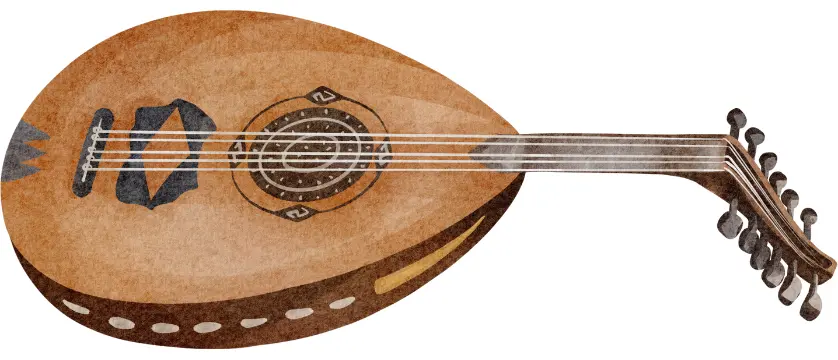
Types of Guitars
The greatest virtue of guitar is that from time to time it has changed its design and forms as per the need of music. Here is the categorization of guitars on the basis of their sound, size and shape that reflecting the guitar history timeline.
- Classical guitars: Classical guitars are the pioneer of 6 string guitars. They generally consist of a hollow wooden body with nylon strings attached to provide a warmer and soothing tone. Classical guitars are mainly used in genres like, Flamenco, Spanish guitar playing and percussive styles of music. The first classical guitar was manufactured by Antonio de Torres in the late 19th century, before the invention of De Torres, guitars were smaller in size and less powerful in tone, often competing with musical instruments with much heavy sounds like grand piano, organ and drums. Torres recalibrated the length of guitar and adjusted the bracing system, which drastically improved the resonance and volume of the instrument. This important step in the history of the guitar allowed it to compete with powerful instruments like the piano and drums.
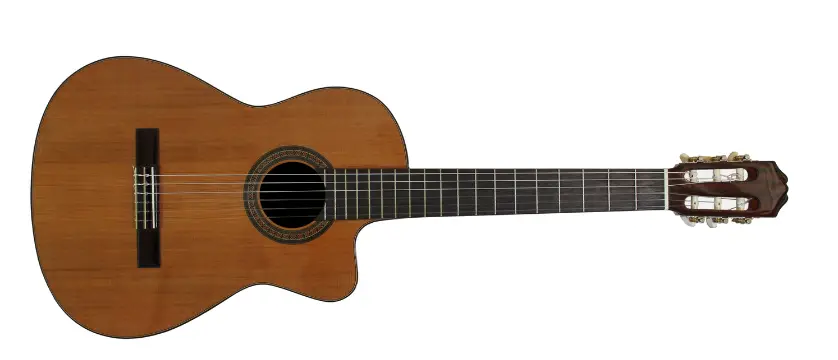
- Acoustic Guitars: Acoustic guitars are similar to classical guitars, but they use steel strings to get more resonant sound, with a much brighter tone. Acoustic guitars became the backbone of mainstream music due to their rich tone. Musical gods like Bob Dylan, Elvis Presley, Johnny Cash, etc. also contribute to the popularity of Acoustic Guitars.
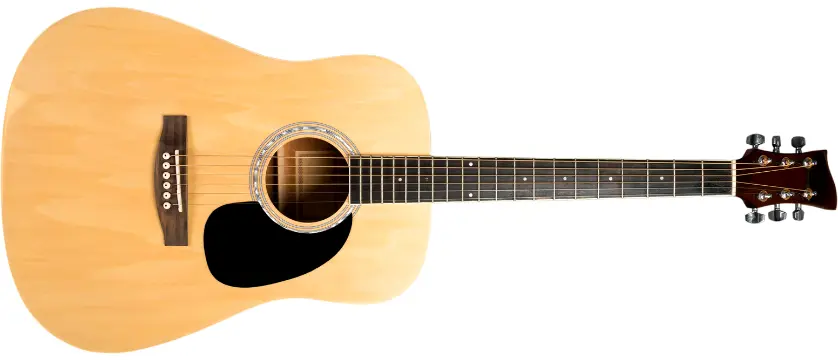
- Electric Guitars: The person behind the invention of electric guitars is George Beauchamp. As the evolution of guitars started happen he gave the music world what it needed the most, A powerful sound to groove masses with just one strum of chords.
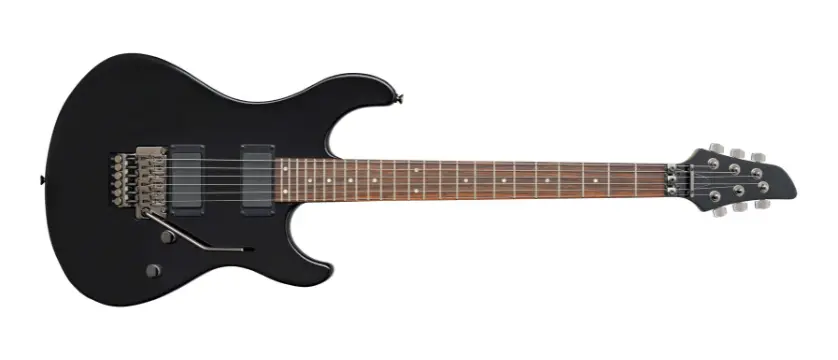
Beauchamp used the magnetic pickups to convert the sound waves coming from strings into the electrical signals with the help of an amplifier. Later, pickups configuration changed according to desired sound and for more distorted sound.
The invention of electric guitars led to an era of heavy distortion and loud music, of rock and heavy metal. Bands like Judas Priest, Black Sabbath, Iron Maiden and AC/DC led a revolution of generational freedom and hippy culture with the help of electric guitars.
The prominent manufacturers of Electric guitars are Fender, founded by Leo Fender, Gibson, Jackson, & ESP.
- Modern Guitars: Modern guitars come in almost every shape and size. The new trends of guitar manufacturing are heavily based on implementation of technology inside the body of the guitar with a focus on easy playability. These guitars also broke the stereotype of using wood for the body of a guitar, and made an impact in evolution of guitar. Nowadays carbon fiber made guitars are in trend with heavy durability.
Shapes of Guitars
The shapes of guitar changed significantly over the time, depending on changes in musical genres and musician’s preferences. The commonly used guitar shapes are.
Acoustic Guitars :
- Cutaway Acoustic: A guitar perfectly suited to play lead guitar as the cutaway body provides extension for fingers to reach higher frets.
- Dreadnought Acoustic: This type of shape is famous for its bright and balanced sound; the large hollow wooden body provides extra resonance making it perfect for strumming chords and fingerpicking.
- Classical Guitar/Nylon string Guitar: This type of guitar came with nylon string giving a warm tone to the instrument. Nylon string guitars are generally used in playing flamenco, Spanish and classical music.
Electric Guitars
- Stratocaster: Stratocaster is one of the most iconic and commonly used shapes in the guitar world. Many prominent artists used fender Stratocaster adding worth to the shape. Stratocaster shape is mainly used by many legends like, Jimmy Hendrix, Mark Knopfler, David Gilmour, Jeff Beck, Ritchie Blackmore, Stevie Ray Vaughan etc. Later with time, the Classical shape of the Strat changed to a more thin and sharp body with a powerful pickup configuration known as Super Strat.
- Les Paul: Inventor and Jazz guitarist, Lester William Polsfuss (Les Paul) made the heavy sound possible when he combined 2 humbucker pickups into a solid body electric guitar, this later inspired the Gibson to create its signature vintage Les Paul design. Prominent artists who used Les Paul guitar are Les Paul, GnR’s Slash, Jimmy page, Frank Zappa, Garry Moore, etc.
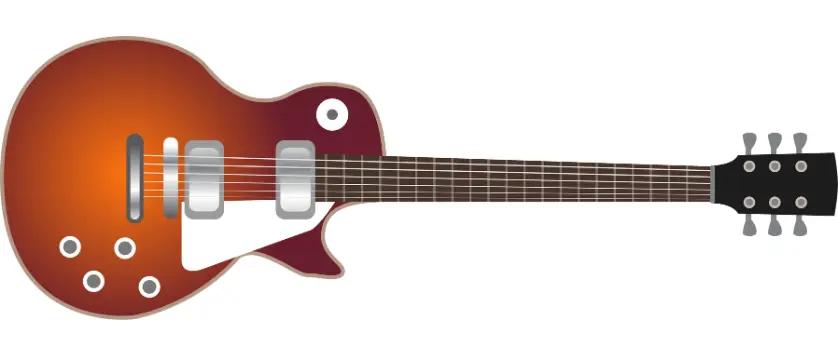
- Telecaster Guitars: Another milestone guitar design came under the craftsmanship of Leo Fender, when he built a well-designed, easy playing, efficient and affordable, Telecaster shape in 1950. Detachable neck, Simple Layout- two knobs and a three- way switch making every position’s sound rich with other knobs act as tone control. It offers a huge range of tone versatility, unlike other guitars. Famous Telecaster players are Bruce Springsteen, Andy Summers, Jim Root, & Muddy Waters.
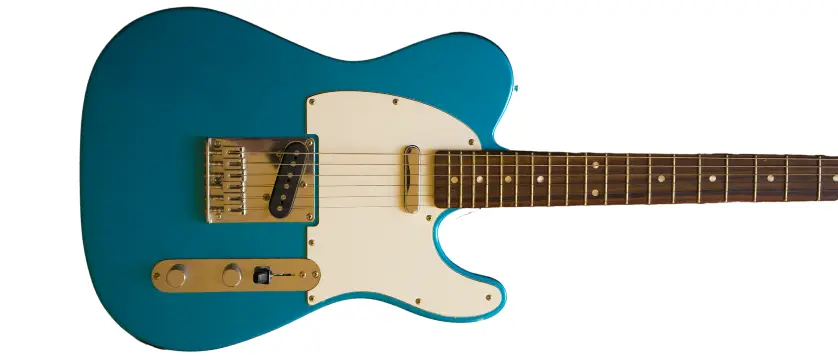
- SG Guitars: During 1960’s, when the tone of guitar is getting dirty and distorted by every fall, Gibson’s Ted McCarty and Larry Allers, took a project to redesign the les Paul shape which resulted in creating a guitar which looks like devil’s horn and can play devil’s music as well. Main players using this guitar are Black Sabbath’s Tony Iommi and AC/DC’s Angus Young.
- Explorer and Flying V Guitars: This type of Guitar model is made by Gibson, focuses on futuristic body design reflecting the heavy style of playing. Both Explorer and Flying V guitars were released in 1958. Most metal players preferred these shapes, prominent one’s are Allen Collins, James Hetfield, Dave Davies, Scott Ian, Kirk Hammett.
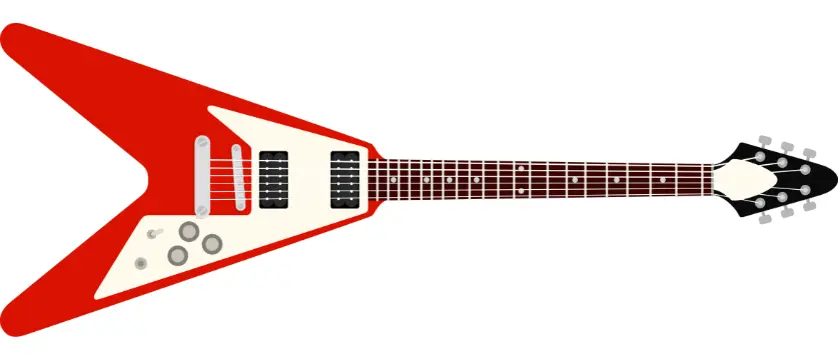
Famous Guitarist of All Time
From the beginning of the guitar itself, many guitarists have pushed the boundaries of the instrument, connecting themselves with their guitar as it is an extension of their body. Here are some of the most famous and influential guitarists of all time.
- Jimmy Hendrix: Crowned as the greatest guitarist of all time, Jimmy Hendrix revolutionized the guitar playing scene with his innovative and unconventional style of playing and created a new genre, psychedelic blues rock. Hendrix did not have the knowledge of reading music or even tuning his guitar, but he surely can immerse himself with the instrument like no other. Hendrix mostly used Fender Stratocaster, replacing string upside down making it a left-handed guitar.
- Eric Clapton: When it comes to playing blues guitar, Eric Clapton always holds a special place for himself. Clapton played for various bands like Cream, The Yardbirds, and his solo career itself. Clapton is always considered as one of the most melodic guitar players of all time with songs like, ‘Layla’ and ‘Tears in Heaven’.
- Jimi Page: Led Zeppelin’s lead guitarist, Jimmy page changed the hard rock scene with his powerful riffs and killer solos, along with his innovative techniques like playing guitar with violin’s bow.
- Carlos Santana: Playing fast or playing too many notes won’t make you a guitar legend, it’s the amount of soul and emotion you put that makes you a musical legend, that’s exactly what Carlos Santana is. Santana’s fusion of various genres like Latin, Rock, Blues and country made him one of the most influential guitarists of all time.
- Andres Segovia: Considered as the father of modern classical guitar, Andres Segovia was a self-taught classical guitarist. He is known for his wide palette of tone, expressive performances and distinctive musical personality created a unique phrasing and style of music.
The Guitar we know today came from years and years of fine craftsmanship, musical knowledge, and passion towards the instrument. From ancient origin to classical to electric to modern guitars, it has been a testament to human ingenuity, Cultural development and unimagined possibilities of music.
It does not matter whether the guitar is in the hands of a Musical Maestro or a kid who just got his first guitar, the feeling of immense passion you feel when you touch it, it’s always the same for both. So next time when you pick up your guitar, remember it came a long way with so much historical significance, be sure to hit a few notes or strum a few chords.
FAQs
What is the History of the Guitars?
The roots of modern-day guitars are clearly traced back thousands of years, when different people from different beliefs and miles away from each other, started using hollow wood bodies and strings (number of strings depend on the instrument). One of the nearest ancestors of guitar was the “lute”, a commonly used instrument in the Middle Ages.
Who invented the guitar?
The exact origin of guitar is unknown, While the first acoustic guitar was designed by Christian Frederick Martin, Antonio Torres invented the first classical guitar and George Beauchamp and Adolph Rickenbacker are credited with inventing electric guitar.
How has the Guitar evolved over time?
Guitar has been transformed from Lute, Ode and Tanbura, but significantly its shape and number of strings changes with time, creating the modern guitars.
What are the origins of acoustic guitars?
The first acoustic guitar was designed by Christian Frederick Martin, when he used steel strings with hollow wooden bodies.
What are the origins of electric guitars?
George Beauchamp and Adolph Rickenbacker are credited with inventing electric guitar in the early 1930’s.
Who is the most famous guitarist in history?
Jimmy Hendrix, Jimmy Page, Eric Clapton, BB King, Jeff Beck, David Gilmour.
How has guitar music changed over the years?
Guitar musicals started with the acoustic guitars which are generally overshadowed by instruments with loud sound, electric guitars made the guitar music stand out in the band.
What are some interesting facts about guitar history?
Guitar originated from Various string instruments like, Oud, tanbur, sitar appear in Mesopotamia, Arab and India.
Vihuela, a Spanish instrument, is one of the closest ancestors to the modern guitar shape. Legendary guitarist Jimmy Hendrix, used his Fender Stratocaster guitar upside down because he is left handed.
Related Blog: Guide for Guitar Accessories
































